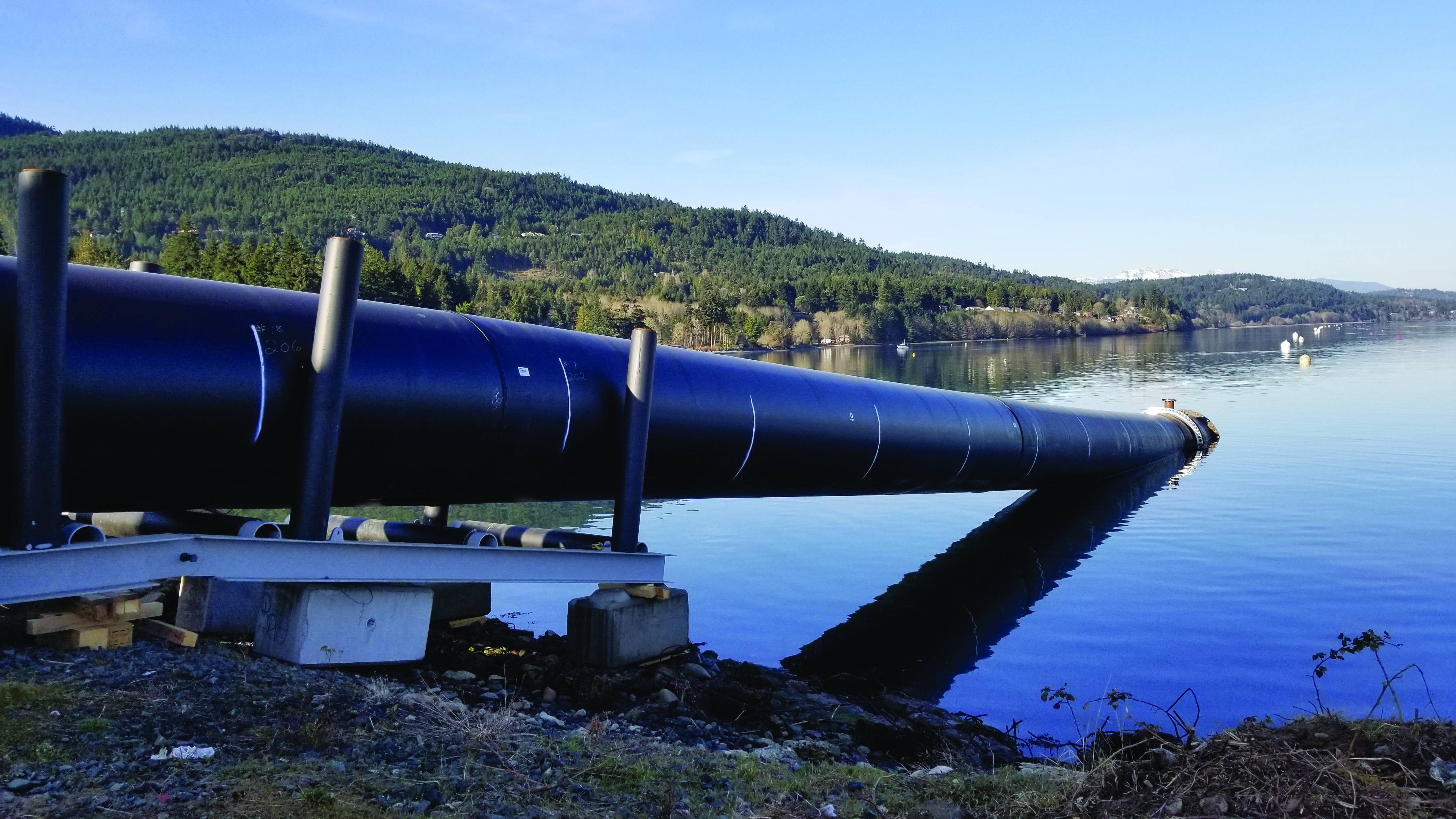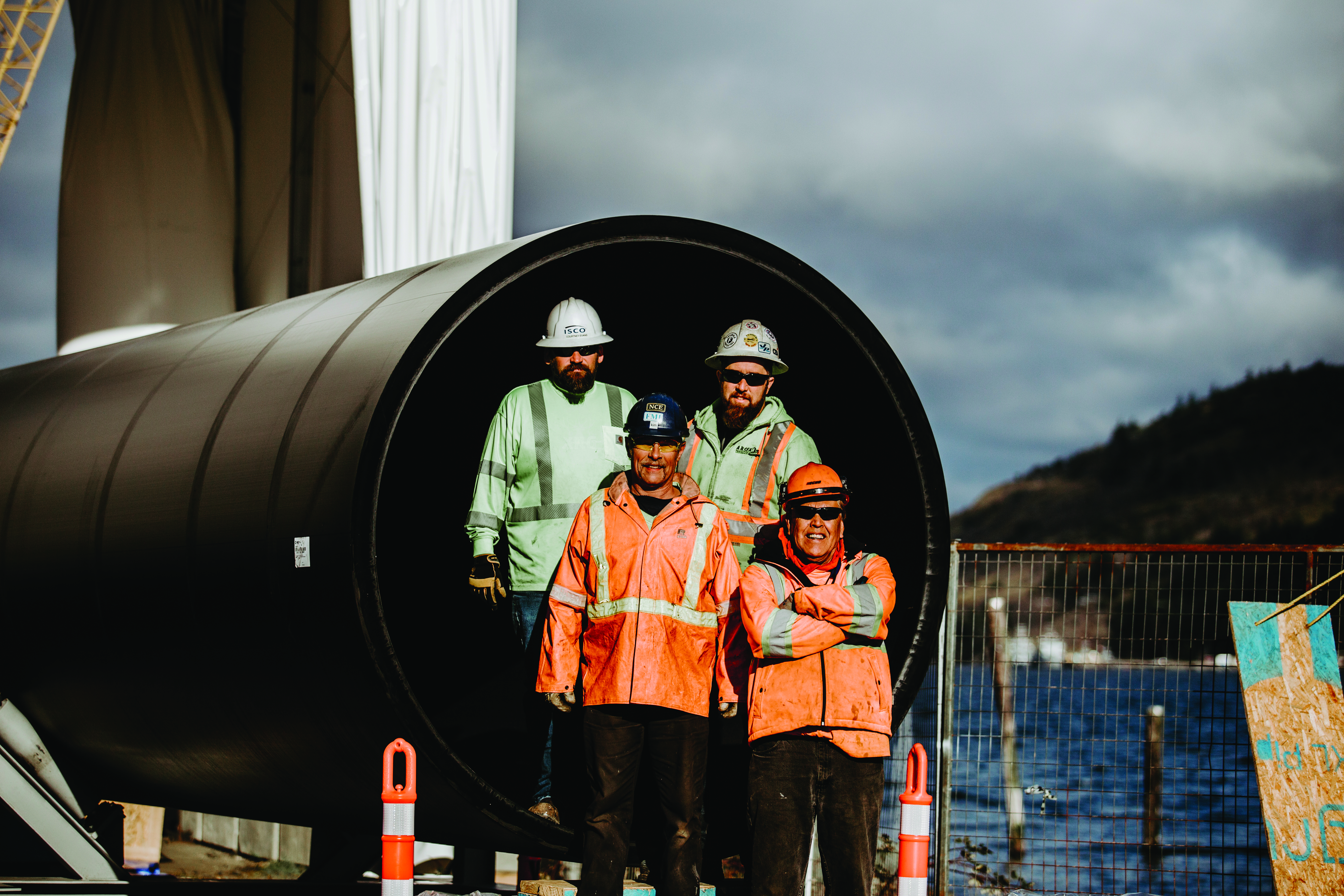The Capital Region District (CRD) comprises 13 municipalities that sought a new tertiary wastewater treatment plant that would help protect and maintain local waterways. The Wastewater Treatment Project officially began in April 2015, with Harbour Resource Partners as the project lead. The project was comprised of several components, including a new wastewater treatment facility, outfall system and residual treatment facility. The new outfall pipe, responsible for discharging the tertiary-treated effluent, had to support high-volume flow.

The project team initially specified 1,800 mm steel pipes for the new outfall pipe. However, the steel pipe’s size and positioning (buried as deep as 60 m over the 2 km distance to the ocean) posed numerous challenges. A buried pipe would carry high maintenance costs if damaged. Designers sought a long-lasting pipe that would not corrode in order to reduce maintenance frequency.
Compliance and other requirements also caused the design to shift first to 2,000 mm and then to 2,250 mm. Finding a suitable pipe material and design within a short time frame proved challenging. The project designers reached out to AGRU and ISCO Industries to help find an effective solution. They started considering pipe made from performance plastics.
XXL HDPE pipe has not achieved widespread usage in the North American market due to a general lack of awareness of its capability and availability. That is starting to change. With each successful project, engineers and customers are beginning to see the merits of super-sized HDPE pipe as well as the full scope of benefits associated with this material’s versatility.

HDPE was eventually selected as the material of choice, with AGRU XXL HDPE pipe selected for use in the outfall structure of the facility. The pipe’s usage of PE-100 was cited as a primary benefit — providing increased flexibility, durability and longevity over competing products of the same size category. These physical properties facilitated installation. HDPE also promised to reduce maintenance costs and downtime due to its chemical stability and resistance to corrosion. Because AGRU’s XXL HDPE pipe is extruded rather than spiral winded, CRD was able to meet EN 12201 and ISO 4427 standards.
The move to HDPE was also predicated on the creation of specialized fittings such as the diffuser pipe section and the flange coupling adapter that would connect the HDPE pipe to a steel pipe section. Both fittings met design requirements and enabled the project to move forward.
Approximately 2,000 m of AGRU XXL HDPE pipe, 110 pipe joints, five fittings and two custom-fabricated assembly pieces were transported to the site to support the sink and deployment methodology selected for the pipe installation. The pipe and supporting pieces were transported by flatbed truck with braces, caps and saddle-style dunnage for the deck provided by AGRU. By sourcing the pipe and all associated fitting components (including elongated stub ends, elbow, a wall spool, a pump spool and diffuser pipes) from AGRU, the designer ensured interoperability to improve the outcome of the installation. All pipe components were fusion welded together by ISCO fusion technicians who also received training from AGRU experienced technicians.
This project demonstrates many positive qualities of plastic pipes, but most importantly highlights the material’s customizability to meet changing requirements. This project achieves two milestones for performance plastics: The use of the largest pressure pipe in North America and the largest solid wall extruded HDPE pressure pipe in North America to be butt fusion welded.
The reduced weight of HDPE pipe (as compared with concrete and steel pipes of the same size category) has already provided cost savings. The pipe’s weight, flexibility and weldability also contributed to reduced installation labor and time. The customer is also expected to capture cost savings over the next 50 years, the lifetime of the project, from reduced maintenance requirements. www.agruamerica.com.